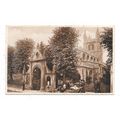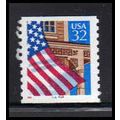Rottingdean, Brighton, E Sussex - AR Quinton postcard (Salmon 1093) c.1920s
- Condition : Used
- Dispatch : 2 Days
- Brand : None
- ID# : 207687289
- Quantity : 1 item
- Views : 229
- Location : United Kingdom

- Seller : justthebook (+1703)
- Barcode : None
- Start : Tue 12 Apr 2022 16:30:08 (BST)
- Close : Run Until Sold
- Remain : Run Until Sold
More Listings from This Seller view all
Seller's Description
- Postcard
- Picture / Image: Rottingdean, [Brighton & Hove, East Sussex] by A. R. Quinton
- Publisher: J Salmn (1093)
- Postally used: no
- Stamp: n/a
- Postmark(s): n/a
- Sent to: n/a
- Notes / condition:
Please ask if you need any other information and I will do the best I can to answer.
Image may be low res for illustrative purposes - if you need a higher definition image then please contact me and I may be able to send one. No cards have been trimmed (unless stated).
------------------------------------------------
Postage & Packing:
Postage and packing charge should be showing for your location (contact if not sure).
No additional charges for more than one postcard. You can buy as many postcards from me as you like and you will just pay the fee above once. Please wait for combined invoice. (If buying postcards with other things such as books, please contact or wait for invoice before paying).
Payment Methods:
UK - PayPal, Cheque (from UK bank) or postal order
Outside UK: PayPal ONLY (unless otherwise stated) please. NO non-UK currency checks or money orders (sorry).
NOTE: All postcards are sent in brand new stiffened envelopes which I have bought for the task. These are specially made to protect postcards and you may be able to re-use them. In addition there are other costs to sending so the above charge is not just for the stamp!
I will give a full refund if you are not fully satisfied with the postcard.
----------------------------------------------
Text from the free encyclopedia WIKIPEDIA may appear below to give a little background information (internal links may not work) :
*************
Rottingdean is a village in the city of Brighton and Hove, on the south coast of England. It borders the villages of Saltdean, Ovingdean and Woodingdean, and has a historic centre, often the subject of picture postcards.
The name is Old English for valley of the people associated with Rōta (a male personal name). Rota was probably the leader of a band of Saxons who invaded the region in 450–500 AD and replaced the existing Romano-British inhabitants. The first recorded mention is in the Domesday Book (Rotingeden, 1086). Other variations to be found in ancient charters include Ruttingedene (1272), Rottyngden (1315) and Rottendeane (1673).[2]
Rottingdean is in a dry valley whose sides in the upper reaches are quite steep, and this valley comes right down to the English Channel coast. The name was contrasted unflatteringly with Goodwood (another place in Sussex) in a national 1970s advertising campaign for wood preserver.
Rottingdean has about 3,200 inhabitants.[3] For most of its history it was a farming community, but from the late 18th century it attracted leisured visitors wanting a genteel alternative to raffish Brighton, among them some names famous in English cultural life. Some, in the late 19th century, notably the painter Sir Edward Burne-Jones and his nephew Rudyard Kipling, made it their home. Kipling's old house adjacent to Kipling Gardens is still standing, and the former house of the painter Sir William Nicholson is currently open to the public as a library and museum. When farming collapsed in the 1920s, much of the farmland became available for building, and Rottingdean increased significantly in population, but especially in the area known as Saltdean. A large number of smallholdings appeared in the detached part of the parish called Woodingdean.
In the summer of 1377 French pirates raided Rottingdean. The raiders probably intended to pillage the nearby Lewes priory.[citation needed] The raiders were detected as they landed, and a portion of the village's inhabitants retreated into the church's Saxon-built tower. The pirates were unable to take the tower and set it on fire; over a hundred people are thought to have died in the blaze. The next day the pirates were met by a force led by the Lewes Prior. During the action, two knights, Sir John Fallisle, Thomas Chinie and the prior were captured. The pirates were, however, driven to depart, with the three men later being ransomed.
Rottingdean is also notable for the black wooden windmill on the hill on its western side. Nicholson made a woodcut that was used as the logo of the publisher William Heinemann; this is often said to have been a depiction of Rottingdean mill, but a glance at both will show that this is untrue. The Rottingdean Preservation Society and its earlier incarnations have been responsible for maintaining the windmill since 1923. It was successful in getting a Heritage Lottery Fund Grant of £41,800 which together with funding from the society has ensured that the windmill remains a remarkable Grade 1 listed attraction in the 21st century. The hill on which it stands, Beacon Hill, is a local nature reserve. The village was once a centre for hunting, especially in the second half of the 19th century. The Brookside Hunt was based in the village until 1902, hunting hares and foxes with a pack of hounds.[4]:119
Rottingdean Cricket Club was founded in 1758 and is still situated inside the village on Falmer Road. The 1st team play in the Sussex County League, Division 3, and is currently captained by Jack Cox.[5]
Listing Information
| Listing Type | Gallery Listing |
| Listing ID# | 207687289 |
| Start Time | Tue 12 Apr 2022 16:30:08 (BST) |
| Close Time | Run Until Sold |
| Starting Bid | Fixed Price (no bidding) |
| Item Condition | Used |
| Bids | 0 |
| Views | 229 |
| Dispatch Time | 2 Days |
| Quantity | 1 |
| Location | United Kingdom |
| Auto Extend | No |



 for 1 item(s)
for 1 item(s)















